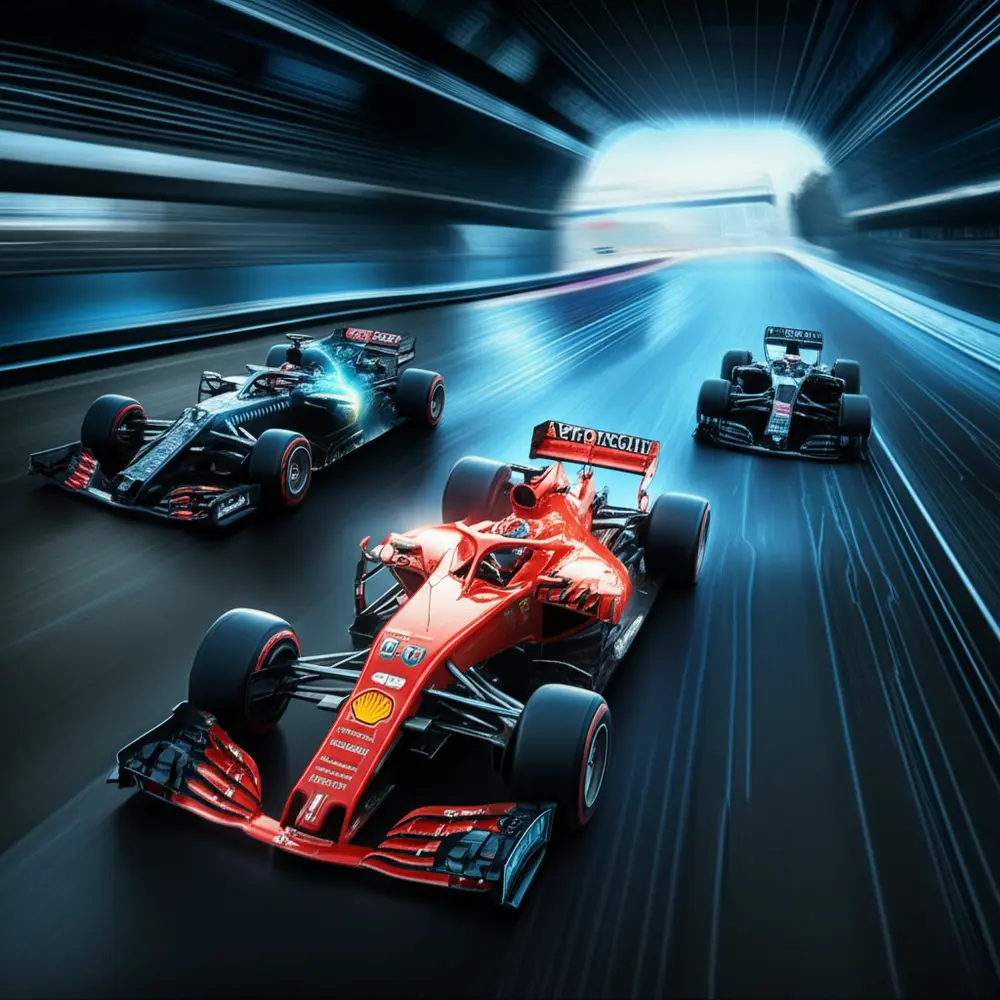Are you struggling to truly understand your customers’ needs? Do rising churn rates keep you awake at night, undermining all your hard work? You need more than just sales figures to drive sustainable growth.
You face intense competition, and every customer interaction matters. Without deep insights, your efforts to foster loyalty feel like guesswork. You are missing the strategic advantage that data can provide.
Imagine transforming casual buyers into ardent brand advocates. You achieve this by leveraging customer loyalty data, the precise telemetry guiding your business toward championship performance. It is time to refine your strategy.
Fueling Growth: Why Customer Loyalty Data is Your Strategic Advantage
Customer loyalty data acts as the high-octane fuel for your modern business. It provides strategic insights, empowering you to accelerate your CX strategy. You gain a competitive edge for sustained growth.
You move beyond reactive measures, anticipating customer needs and preferences. By meticulously analyzing past interactions, you forecast future behavior. You refine service offerings proactively, not reactively.
Consider **Finanças Inteligentes**, a financial consulting firm. By analyzing client interaction frequency and service utilization, they identified key loyalty drivers. This led to a 15% increase in client retention over six months.
You might ask: “How do you know which customers are truly loyal?” Loyalty data encompasses purchase histories, interaction logs, feedback surveys, and engagement metrics. Each piece contributes to your holistic view.
This deep understanding is essential for your data analytics. It enables informed decision-making across all departments. You stop guessing and start acting with precision.
Essential Features: What Your Loyalty Data System Needs
To effectively capture customer loyalty data, your systems must offer crucial features. You need robust CRM integration to centralize customer profiles. This includes contact information, purchase history, and service interactions.
Your platform should support multi-channel data capture. You collect insights from email, social media, chatbots, and direct messaging apps. This ensures a comprehensive view of every customer touchpoint.
Furthermore, look for analytics capabilities that provide real-time dashboards. You monitor key loyalty metrics like repurchase rate and customer lifetime value. Instant insights allow for swift strategic adjustments.
Consider automated feedback mechanisms, like post-interaction surveys. You gather immediate sentiment. This direct feedback enriches your data, helping you understand the “why” behind behaviors.
Finally, your system must offer powerful segmentation tools. You group customers based on behavior, demographics, or loyalty tiers. This precision targeting is vital for personalized communication and offers.
Harnessing Predictive Power: From Data to Proactive CX
Understanding customer loyalty data enables powerful predictive analytics. This capability transforms how you approach customer experience. You identify at-risk customers, allowing for targeted retention tactics before churn occurs.
Imagine **Tech Solutions Pro**, an IT service provider. They implemented predictive models using customer support ticket frequency and contract renewal history. This allowed them to proactively engage 20% of clients flagged as “at-risk,” preventing a potential 10% revenue loss from churn.
You no longer react to problems; you prevent them. Predictive modeling forecasts future customer behavior. This means you anticipate needs, identify potential detractors, and intervene proactively before loyalty erodes.
Comprehensive data analytics also reveals segments of highly engaged customers. By studying their attributes, you replicate success. You tailor campaigns that resonate deeply with similar prospects, optimizing your marketing spend.
You fine-tune every aspect of the customer journey with precision. This direct approach maximizes your return on investment. You achieve more with less, thanks to data-driven insights.
Behavioral Analytics vs. Demographic Segmentation: Which Drives Deeper Insights?
When analyzing loyalty data, you often choose between behavioral analytics and demographic segmentation. Behavioral analytics focuses on *what* customers do. You examine purchase history, interaction patterns, and product usage.
This approach reveals intent and preference directly. For example, you might discover that customers who engage with your blog twice a month have a 25% higher repurchase rate. This insight guides your content strategy.
Demographic segmentation, conversely, groups customers by *who* they are. You use age, location, income, or occupation. This provides a broad understanding of different customer groups.
However, demographics alone might not predict loyalty accurately. A 30-year-old in New York might behave very differently from another 30-year-old in the same city. You need more granular data.
The most effective strategy combines both. You use demographics to define broad target groups. Then, you layer behavioral analytics to understand their specific actions and motivations. This dual approach offers the deepest insights for your CX strategy.
Data Security & LGPD: Protecting Your Customer’s Trust
Collecting vast amounts of customer loyalty data comes with significant responsibility. You must prioritize robust data security measures. Implement end-to-end encryption for all data in transit and at rest.
You also need strict access controls. Only authorized personnel should view sensitive customer information. Regular security audits and penetration testing are crucial to identify vulnerabilities.
Furthermore, you must comply with data protection regulations like LGPD (General Data Protection Law). This law mandates how you collect, process, and store personal data. Non-compliance leads to severe penalties and eroded trust.
You ensure explicit consent from customers for data collection. Clearly explain how you use their data. Provide easy ways for customers to access, rectify, or delete their information, upholding their rights.
LGPD compliance is not just about avoiding fines; it builds customer trustworthiness. When customers know their data is safe and respected, their loyalty strengthens. This is a non-negotiable aspect of your CX strategy.
Elevating Engagement: Personalized CX Strategies
Customer loyalty data is crucial for personalizing interactions at scale. Insights into individual preferences, communication channels, and purchase history allow for bespoke messages. You deliver offers that truly resonate.
This level of personalization significantly enhances customer satisfaction. It strengthens brand affinity, transforming transactional relationships into genuine connections. Your customers feel truly valued.
**Elegance Decor**, an online home goods store, used purchase history and browsing behavior to personalize product recommendations. They observed an 18% increase in conversion rates for targeted email campaigns and a 10% rise in average order value.
Your effective CX strategy fundamentally relies on robust customer loyalty data to foster engagement. Through data-driven insights, you pinpoint optimal touchpoints and content types. Every interaction you provide adds value.
Are your current communication channels failing to connect with diverse customer segments? You can optimize communication using Multi-User WhatsApp. This platform centralizes all your customer conversations, providing a unified view for your team.
You can manage all interactions from one dashboard, ensuring consistent messaging and quick responses. This efficiency, much like a quick pit stop, minimizes friction. It strengthens loyalty by streamlining service.
AI-Driven Personalization vs. Human-Touch Service: Finding the Balance
You face a critical decision: how much to automate personalization and when to interject human interaction. AI-driven personalization excels at scale. It analyzes vast datasets to deliver relevant content and product suggestions automatically.
For example, AI can power recommendation engines on your website. It can also segment email lists for automated campaigns. This efficiency saves time and resources, ensuring consistent, data-backed personalization.
However, human-touch service offers empathy and complex problem-solving. A customer struggling with a nuanced issue often prefers direct interaction. A human agent provides reassurance and builds rapport that AI cannot fully replicate.
The optimal approach combines both. You use AI for routine tasks and initial personalization. This frees your human agents to handle complex queries and high-value interactions, delivering a superior experience.
For instance, Multi-User WhatsApp can handle initial customer queries with AI chatbots, then seamlessly hand off to a human agent. This ensures efficiency while preserving the critical human connection. You deliver the best of both worlds.
The Importance of Support for Integrated Systems
Your CX strategy relies on seamless system integration. When you combine loyalty data platforms with communication tools like Multi-User WhatsApp, you need excellent support. Technical issues can quickly disrupt customer service.
You should prioritize vendors offering prompt, knowledgeable technical support. Ensure they provide clear documentation and tutorials for your team. This empowers your staff to resolve minor issues independently.
Effective support extends beyond technical fixes. It includes strategic guidance on optimizing your tools. A good support team helps you leverage your integrated systems to their full potential, maximizing your investment.
Poor support, conversely, leads to frustration and inefficiencies. It impacts your customer-facing teams and, ultimately, your customers. Invest in solutions backed by reliable, proactive support.
This commitment to robust support ensures your integrated systems operate smoothly. You maintain consistent, high-quality customer engagement. This directly contributes to stronger customer loyalty and satisfaction.
Mastering Retention: Tactics for Lasting Loyalty
With clear insights from data analytics, you develop highly personalized retention tactics. Tailored offers, proactive support, and custom content resonate more deeply. This strategic personalization fosters stronger customer relationships.
Consequently, you move from reactive problem-solving to proactive engagement. Predicting potential issues based on customer loyalty data allows you to intervene. You address dissatisfaction before it escalates, significantly enhancing your overall CX strategy.
**VitaHealth Clinic** used appointment history and feedback data to predict patient no-shows. They implemented proactive reminder calls and follow-ups. This led to a 25% reduction in missed appointments and a 15% increase in patient satisfaction.
These data-driven insights are indispensable for developing impactful retention tactics. By understanding what drives repeat purchases, you craft loyalty programs and exclusive offers. You reward and retain valuable customers, curbing attrition rates effectively.
Consider the immense financial impact: acquiring a new customer can cost five to 25 times more than retaining an existing one. By increasing customer retention rates by just 5%, you can boost profits by 25% to 95%, according to Bain & Company research. Your focus on retention directly impacts your bottom line.
Loyalty Programs vs. Experiential Rewards: Building Deeper Connections
You have various options for retention tactics. Loyalty programs, like points systems or tiered memberships, incentivize repeat purchases. Customers earn rewards, discounts, or exclusive access based on their spending.
These programs are quantifiable and encourage transactional loyalty. They work well for businesses with frequent purchases. You offer clear benefits, motivating continued engagement.
Experiential rewards, however, focus on creating memorable moments. This might include exclusive event invitations, personalized gifts, or early access to new products. These foster an emotional connection with your brand.
While harder to quantify directly, experiential rewards often lead to higher brand advocacy. They transform customers into passionate supporters. You build a community around your brand, not just a customer base.
Your data dictates the best approach. High-frequency, low-value purchases might benefit more from points programs. High-value, infrequent purchases might thrive on unique experiences. You might even combine both for a comprehensive strategy.
Step-by-Step: Identifying and Engaging At-Risk Customers
You can proactively prevent churn by following a clear process. Here’s how you identify and engage at-risk customers:
1. **Define Churn Indicators:** You first establish what “at-risk” means for your business. This could be declining purchase frequency, reduced engagement with emails, negative feedback, or overdue payments. Use your historical loyalty data to find common patterns.
2. **Segment and Score:** You use data analytics to segment your customer base. Create a “risk score” for each customer based on your defined indicators. High scores flag immediate attention; moderate scores require monitoring.
3. **Analyze Root Causes:** For high-risk segments, dive deeper. What changed in their behavior? Did they have a negative support interaction? Did a competitor launch a new product? Your loyalty data will often reveal clues.
4. **Personalize Outreach:** You craft highly personalized messages. Reference their past interactions or specific pain points. Use channels they prefer, perhaps a direct message via Multi-User WhatsApp for sensitive issues.
5. **Offer a Solution:** Do not just ask why they are leaving. Provide a compelling reason to stay. This could be a personalized discount, an exclusive offer, or a direct call from a dedicated account manager. Make it relevant to their needs.
6. **Monitor and Iterate:** After intervention, you track their engagement. Did the tactic work? If not, refine your approach. This continuous feedback loop improves your retention tactics over time. You learn and adapt.
Measuring Success and Sustaining Loyalty Momentum
Achieving customer loyalty is just the beginning. Sustaining that connection requires continuous, data-driven effort. You optimize throughout the entire customer lifecycle, much like a Formula 1 team. True momentum demands constant attention to evolving customer needs.
Your customer loyalty data becomes the indispensable fuel for this ongoing journey. It guides every strategic decision, ensuring you remain agile. You adapt to market changes and customer expectations.
**Global Transport Solutions** continuously monitored their customer feedback and service usage data. They refined their logistics tracking platform based on insights, leading to a 12% increase in customer lifetime value (CLTV) and a 10% reduction in service-related complaints annually.
You define success through comprehensive metrics, moving beyond simple transactions. This includes repeat purchase rates, customer lifetime value (CLTV), and genuine engagement levels. These reveal the true health of customer relationships.
Effective CX strategy hinges on robust data analytics. By meticulously analyzing customer behaviors, you gain profound insights. You understand what genuinely resonates, shaping future interactions and offerings.
Lagging Indicators vs. Leading Indicators: What Truly Predicts Loyalty?
You evaluate your loyalty strategy using various metrics. Lagging indicators measure past performance. Examples include churn rate, customer lifetime value (CLTV), and average order value. These tell you what *has happened*.
While crucial for historical analysis, lagging indicators do not help you predict the future. You cannot intervene to prevent an event that has already occurred. You need more proactive metrics.
Leading indicators, conversely, forecast future loyalty. These include website engagement, frequency of app logins, participation in loyalty programs, or positive sentiment in support interactions. They show what *is likely to happen*.
By monitoring leading indicators, you gain the ability to intervene proactively. A sudden drop in engagement might signal an at-risk customer. This allows you to deploy retention tactics *before* churn becomes a lagging indicator.
You build a comprehensive CX strategy by focusing on both. Use lagging indicators to understand historical trends. Leverage leading indicators for real-time adjustments and proactive interventions, staying ahead of the curve.
Calculating Customer Lifetime Value (CLTV): A Practical Example
Understanding CLTV is crucial for your loyalty strategy. It tells you the total revenue a customer is expected to generate over their relationship with your business. You calculate it to assess the long-term value of your retention efforts.
Here’s a simplified way to calculate CLTV:
1. **Average Purchase Value (APV):** Calculate the average amount a customer spends per transaction.
* *Example: Total Revenue / Number of Purchases = $500,000 / 10,000 purchases = $50 APV.*
2. **Average Purchase Frequency Rate (APFR):** Determine how many times a customer buys in a given period (e.g., year).
* *Example: Total Purchases / Unique Customers = 10,000 purchases / 2,000 customers = 5 APFR per year.*
3. **Customer Value (CV):** Multiply APV by APFR.
* *Example: $50 APV * 5 APFR = $250 CV per year.*
4. **Average Customer Lifespan (ACL):** Estimate how long a customer remains active.
* *Example: 5 years.*
5. **CLTV:** Multiply Customer Value by Average Customer Lifespan.
* *Example: $250 CV * 5 years ACL = $1,250 CLTV.*
Knowing your CLTV helps you decide how much to invest in customer acquisition and retention. If your acquisition cost is $150, and your CLTV is $1,250, you have a healthy, profitable relationship. You can teach your team this calculation to empower their strategic thinking.
To deepen this analysis, you might integrate tools like Multi-User WhatsApp. This allows your team to centralize customer conversations, offering a wealth of real-time data. You enable more responsive service and facilitate deeper relationship building, crucial for ongoing loyalty and boosting CLTV.






